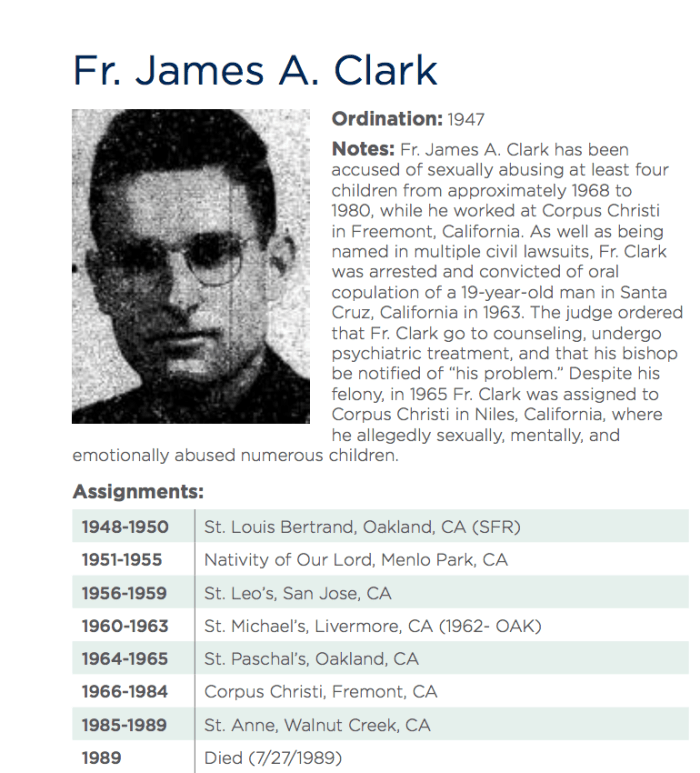How Naming the Alleged Abusers in the Catholic Church Scandal in California Helps Survivors Overcome Their Trauma
By Emily Moon
The work histories compiled in the firm's report show that, after Clark's felony charge in 1963, the priest was reassigned three times. This is how he ended up at McNevin's Fremont church, where he "allegedly sexually, mentally, and emotionally abused numerous children," the report says. Between 1948 and his death in 1989, he had been moved to seven different posts across the state. In the months after the Pennsylvania grand jury report put clergy abuse back in the national spotlight, Anderson & Associates has been leading the effort to name names in California, home to more than 10 million Catholics. The Minnesota-based firm published another report in early October, accusing 307 priests of abuse in Los Angeles. It's also representing survivor Tom Emens, who filed a civil lawsuit this month against 11 dioceses, naming every single bishop in the state of California. "This lawsuit is designed to require each of them to come clean, to actually tell the truth about what they know," attorney Jeff Anderson said in a press conference on Tuesday. He called the cover-up of clergy sex abuse in California, where parishes relocated some abusers more than 20 times, "a conspiracy of silence and secrecy." The inner workings of this conspiracy are extensive, Anderson says: Some bishops have chosen to believe priests over their victims; work histories show the movement of abusers across the state, many with prior convictions; and the Vatican has long compelled its dioceses to secrecy. The Bay Area list more than doubles the number of abusers that the three dioceses have so far acknowledged, according to SNAP. And yet lawyers and advocates agree it's still far too low. The majority of incidences of sexual assault go unreported, and that's especially true in the case of clergy abuse. (The Pennsylvania investigation found that up to 8 percent of priests in the state abused children.) But research shows most survivors of clergy sex abuse wait decades to report, if at all; many face stigma and fear of backlash in their community, as well as the ongoing trauma of abuse, and, often, a crisis of religious belief. One 2008 study found that less than 5 percent of cases were reported within a year. In California, where 29 percent of the population is Catholic, McNevin estimates that as many as 2,000 priests could have abused thousands of children. Some bishops have already tried to downplay these numbers by claiming they are not responsible for the actions of order priests, such as Jesuits or the Franciscans, who were working and living in the diocese at the time of abuse. "The alleged incidents occurred, and the reports of abuse were made, in other jurisdictions and were not shared with the Diocese of San Jose," the diocese said in a statement on Wednesday, the Mercury News reports. Anderson, meanwhile, says his firm will push back on this excuse. "That is a deceit and a deflection," he says.
|
.
Any original material on these pages is copyright © BishopAccountability.org 2004. Reproduce freely with attribution.
